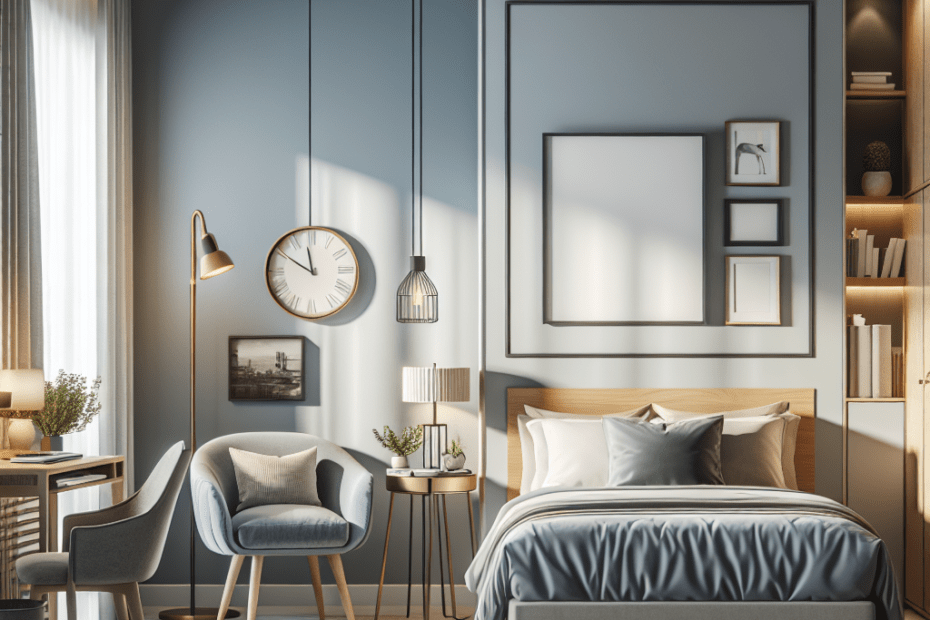“`html
The Essentials of Functional Guest Room Design
As travelers continue to seek comfortable and welcoming accommodations, hospitality experts focus on enhancing the guest experience. A growing trend in this domain is functional guest room design, which blends aesthetics and practicality to meet guests’ needs. By understanding the essentials of functional guest room design, hoteliers and homeowners can create spaces that resonate with comfort, style, and functionality.
The Importance of Space Utilization
Guest rooms should be thoughtfully organized to make optimal use of available space. According to a Hotel Management Report, 68% of travelers value spacious accommodations over cramped ones. Effective space utilization involves using multi-functional furniture, such as beds with storage drawers or desks that double as vanity tables. These ideas prioritize space efficiency without compromising on guest comfort.
Comfort and Aesthetic Harmony
A functional guest room design harmonizes comfort with aesthetics. Design elements such as color palettes, textures, and lighting play a critical role in achieving this balance. Soft, neutral tones are often favored as they evoke a sense of calm and relaxation. Furthermore, layered lighting, combining ambient, task, and accent lighting, ensures that the room is adaptable to different moods and activities.
Technology Integration
Another key element in functional guest room design is technology integration. Modern travelers expect connectivity and convenience. Fast Wi-Fi, abundant charging ports, and smart TVs are now essentials rather than luxuries. Additionally, according to a survey by Statista, 74% of guests reported that technology-enhanced experiences significantly improve their overall satisfaction. Thus, seamless technology integration becomes indispensable in contemporary guest room design.
Personalization and Flexibility
Guest room designs that provide personalized experiences are likely to leave a lasting impression. Whether it’s offering a choice of pillow types or customizable room settings through smart controls, personalization matters. Moreover, flexible room layouts that can easily adapt to different group sizes and preferences are crucial. A study by Hotel Management highlights that 55% of guests appreciate rooms that offer adaptable spaces catering to their specific needs.
Sustainability and Eco-friendliness
In recent years, sustainability has become an indispensable aspect of functional guest room design. Using eco-friendly materials, energy-efficient appliances, and water-saving fixtures aligns with the increasing consumer demand for responsible travel options. According to a report by Booking.com, 82% of global travelers consider sustainable travel important. By incorporating green initiatives, hosts not only minimize their environmental impact but also enhance their brand appeal.
Key Takeaways
- Functional guest room design emphasizes space utilization through multi-purpose furniture and efficient layout.
- Comfort is paired with aesthetic harmony using soothing colors and layered lighting.
- Technological amenities are fundamental for enhanced guest satisfaction.
- Personalized and flexible designs cater to individual guest preferences and needs.
- Sustainable practices respond to eco-friendly traveler expectations.
Guest Room Design Checklist
| Design Aspect | Description |
|---|---|
| Space Utilization | Incorporate multi-functional furniture. |
| Comfort & Aesthetic | Choose calming color schemes and adaptable lighting. |
| Technology Integration | Ensure fast Wi-Fi and smart devices. |
| Personalization | Offer customizable room settings. |
| Sustainability | Utilize eco-friendly materials and energy-efficient appliances. |
FAQ
- What is functional guest room design?
Functional guest room design focuses on creating spaces that blend comfort, utility, and aesthetics to enhance the guest experience. - Why is technology integration important in guest rooms?
Technology integration provides connectivity and convenience, improving guest satisfaction and adapting to modern expectations. - How can a guest room be both stylish and comfortable?
By balancing soothing color schemes, textures, and layered lighting, a guest room can achieve aesthetic appeal while maintaining comfort. - Why should sustainability be part of guest room design?
Sustainability addresses eco-conscious travelers’ concerns and contributes positively to environmental conservation efforts. - How does personalization improve the guest experience?
Personalization makes guests feel valued and caters to their specific preferences, leading to a more memorable stay.
“`
This article aims to highlight the key components of crafting functional guest room designs, focusing on their impact on guest satisfaction and overall travel experiences. By incorporating these principles, hosts can effectively transform their guest rooms into cherished havens for travelers.
